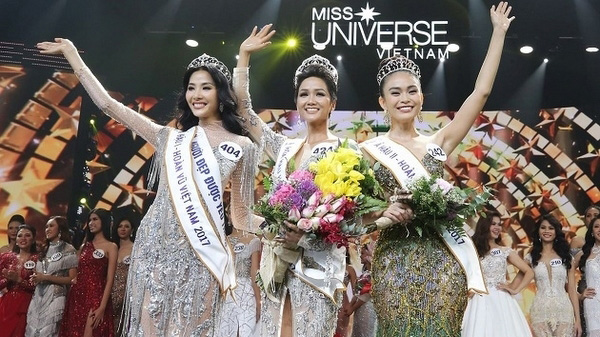


|
Born in 1992, this beauty comes from the Central Highland
province of Dak Lak and is now a freelance model in Ho Chi Minh City.
Nie overcame 41 other contestants across the country to
secure the crown. With a toned body, standing at 172 centimeres tall and with
measurements of 84-60-93, she also won the title sea pageant beauty.
She received a crown worth VND2.7 billion (US$118.530) and
many other valuable gifts and cash. The beauty is scheduled to represent
Vietnam at this year’s Miss Universe.
The title of first runner-up went to Hoang Thi Thuy while
the title of second runner-up was awarded to Mau Thi Thanh Thuy.
Both of them were champions of the Vietnam's Next Top Model
contest and have had experience of walking the catwalk at international
events. One of the runners-up will compete at the Miss Universe 2019.
The organisers also awarded other titles including the
talented beauty, sports beauty, friendly beauty, people’s choice beauty, Ao
Dai beauty and photogenic beauty.
Along with Miss and two runners-up, Bui Thanh Hang and Tieu
Ngoc Linh were among the top five of the competition.
|
Source: NDO